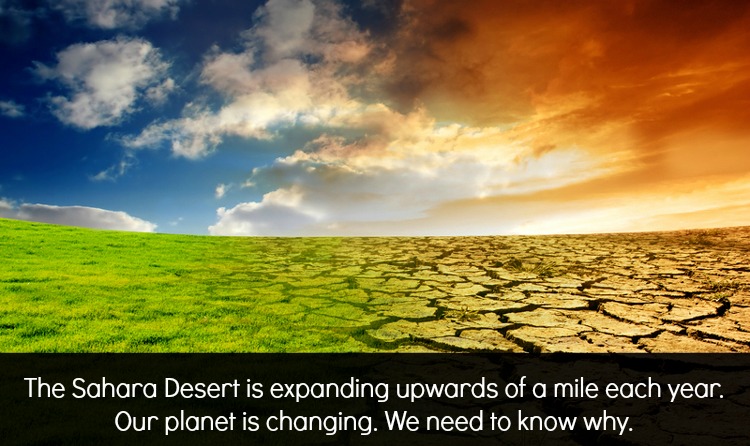
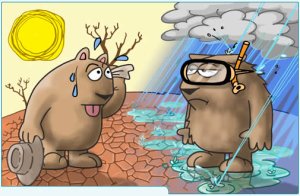
Global warming. You don’t have to spend much time online, watching the news or reading the paper before you come across this rather dark and worrying term. For the past few decades the evidence for global warming has been stacking up and, despite those that still avidly deny it (especially with the current freezing weather for many), governments are evermore influenced by the threat. The feedback after the various summits and new laws governing industry has been varied; some are all for it, while others believe the new policies are just unnecessary.
First off, Climate change is a perfectly natural process and the Earth goes through a repeated cycle of glaciation over a period of tens or hundreds of thousands of years. We know this because scientists can study the last few hundred thousands years in remarkable detail by using various techniques of analysing snapshots of the climate in the past. Some of our most effective methods have been from sampling the sea floor, and by taking ice cores from the deep sheets in Antarctica. By extracting a core from the ocean floor, what you effectively gain is a timeline containing the records of the changing ratios between oxygen isotopes 16 and 18. During colder phases more ice is trapped on land as glaciers and ice sheets, and during evaporation O-16 is easier to lift off the sea and so we find a high concentration of O-18 in the ocean sediments. During a warmer climatic period we see the sort of ratios of O-16 to O-18 that we would usually expect.

Ice core analysis is usually the preferred method (in part due to its accessibility compared to the sea floor cores), and they are usually extracted from places such as Antarctica and Greenland. The gases in the atmosphere are trapped in the structure of the ice at the time when the ice settles into a new layer, which provides a record of the gas ratios at that specific time. Higher levels of carbon dioxide and methane usually link to a warmer climate, and recent evidence suggests that we are actually OUTSIDE the Earth’s natural cycle and overdue an ice age. Other methods of analysis include coleopteran beetle remains, studying the evidence for changing sea levels, dendrochronology (tree-rings), pollen analysis and event historical records (such as art and early weather records.
In the past possible causes of climate change could have included variations in the Sun’s activity, changes in the Earth’s orbit and tilt, meteorite impacts, volcanic activity, continentality, oceanic circulation and atmospheric composition. But scientists are warning us that we are on the verge of a serious environmental catastrophe if we don’t act soon, so what exactly is going on? How does global warming work? How can we deduce it still isn’t a natural phenomenon?
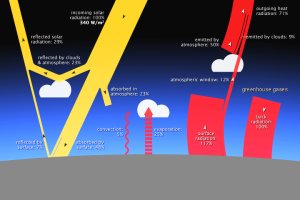
Global warming and the greenhouse effect are often used interchangeably, and this is incorrect. The appropriate terminology to use is the ENHANCED greenhouse effect. The greenhouse effect is what sustains nearly all life on Earth, and without life as we know it would never have been able to evolve and flourish as it does today. The atmospheric heat budget is the net flow of energy into the Earth that it gains from the Sun, and this is what begins the greenhouse effect. Incoming radiation from the sun is mostly shorter wave, and the levels of such radiation may be controlled by solar activity or Earth’s orbit and tilt (which is not constant). Of all radiation that reaches Earth; 25% if reflected off the upper atmosphere, 25% is absorbed and re-radiated by clouds, 5% is reflected off the surface. In theory, the equator should have a surplus of heat and the poles a deficit; resulting in on getting hotter and hotter, and the other colder and colder. But actually the excess equatorial heat is carried away by the jet stream, hurricanes, depressions and ocean currents towards the poles.
When the Earth heats up – just as any object – it reradiates energy as longer wave infrared radiation, some of this escapes into space, some is absorbed by clouds and some is absorbed by gases in the atmosphere. Greenhouse gases include molecules such as carbon dioxide, methane and, more surprisingly, water vapour. What makes them a greenhouse gas is a property associated with their covalent bonds that allow them to absorb radiation. After this, they vibrate, transferring their energy, as well as reradiating the heat again in all directions. This includes down back down to Earth, and if the gases did not do this the surface temperature of Earth would be, on average, 30 degrees centigrade cooler than it is today. But when we release more of these gases through deforestation, the burning of fossil fuels and agriculture (just to name a few) into the atmosphere, we are increasing the amount of heat that is reradiated back down to Earth.
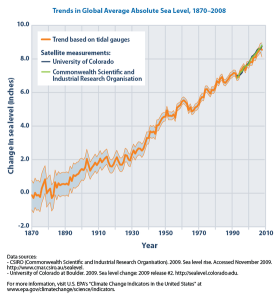
Evidence has shown that, on the geological time scale, recently there has been an equilibrium of these 2 flows, and so the 15% increase in carbon dioxide over the past 100 years is almost undoubtedly anthropogenic. This rate of increase doesn’t appear to be slowing down either, and with the growing world population there is a serious cause for concern. A doubling of the atmospheric carbon dioxide would increase temperatures by an average of 2-3 degrees (highest at higher latitudes) – this may sound insignificant, but this increase has the possibility to trigger a global shift in the climate pattern and extreme weather will dominate. Sea levels could rise by 5-10cm every decade this century. That is enough to cause serious flooding in low lying coastal countries such Bangladesh and Holland, but also enough to completely submerge some islands including the Maldives within 50 years if action isn’t taken – even though some argue the damage has already been done.
Of course sea level rise is not the only danger; extreme weather events such as heat waves, storms and droughts will all last longer with increasing frequency and intensity. The severity of the coming global situation is critical, but has not gone unnoticed by world leaders and we have seen some of the most influential meetings happen in the last 20 years. International responses to global warming have included the Rio Earth Summit of 1992, the Kyoto Protocol of 1997 and the foundation of the Intergovernmental Panel for Climate Change. The Rio Earth Summit agreed that the threat was genuine, and to stabilise the situation to slow down the rate of climatic change, emissions must be brought down by 60% of that in 1992. 5 years later 100 countries signed the Kyoto Protocol, which set more specific targets for pollution mitigation and proposed schemes to enable governments to reach them, and 162 countries had signed by 2006 and the aim was to reduce emissions to those of 1990.
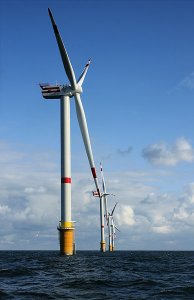
But the Kyoto Protocol hasn’t been adopted by the world with ease. The US refused to comply with the targets as President Bush claimed that they were unattainable and would result in the damaging of their economy – regardless of the fact that the US released 21% of the world’s emissions even though it only has 4% of the world’s population. One of the policies introduced following the Kyoto meeting has been the introduction of ‘Carbon Credits’. The scheme designates a country its own personal annual carbon dioxide emission limit with the goal of reducing what they use. Those countries that exceed their emission limit have the opportunity to buy credits from those that have not used up their limit, but if they continue to over-emit the country is required to pay substantial fines or forced to invest into greener energy sources and the development of lesser economically developed countries.
Though the real goal of the global warming battle is to create a sustainable attitude using laws and campaigns on the national and local levels. This means that local councils are required to take responsibility for their own regions to reduce emissions and make air, transport and waste policies cleaner. The domestic front needs to also be tackled using building regulations to ensure that new housing is properly insulated, and systems such as boilers and electrics are as efficient as possible. Advertising efforts are also in use to attempt to encourage the individual feeling of responsibility for not just your neighbourhood, but the Earth too. We are all encouraged to separate out our waste into what can be recycled and that still destined for landfill, as well as to turn off lights when we leave rooms and use more public transport.

Out of the world’s longer developed countries, the UK has been particularly proactive in enforcing national and regional policies to combat global warming and reduce emissions. The Carbon Trust was granted £65 million (US$100 million) from the government for a 5 year scheme to provide loans to small businesses investing in improved energy efficiency, and for homes installing energy-generating technology (solar panels, wind turbines etc.). Recent targets have been increased and they aim to reduce emissions by 26% for 2020 and by 60% for 2050 with an annual review of targets by an independent committee. Other schemes in London include the extensive and efficient public transport system that is subsidised for regular commuters in and out major cities, as well as the much publicised ‘Boris Bikes’ (named after the current Mayor of London). Though the UK is not alone in its efforts and by no means is doing the most in the world. What is key for the future of energy use and the maintenance of a sustainable way if living is the combined effort of everyone in a group responsibility for our planet.
What is key for the future of energy use and the maintenance of a sustainable way if living is the combined effort of everyone taking responsibility for our planet. Only through the joint cooperation of people taking an active approach at reduced their individual carbon footprint will we make advances to reducing our emissions. At the end of the day, a runaway greenhouse effect may only lead to our own extinction and the Earth will go on as normal for billions of years thereafter.